Surviving Mars review: Spreading humanity to the stars isn’t easy - fordquatere
Redundancy. After spearheading humanity's firstly-ever Martian dependency, I've realized redundance is scalding. You'Ra edifice one pipe 'tween the oxygen pump and the dwelling house dome? Build two. Your power grid is clustered together? Seduce 2 or trine groups of solar panels instead, and throw a few wind turbines into the mix for when the sun goes down. One farm? Try four.
When help is 34 million miles (or 55 million kilometers) away, your only hope is that when something goes wrongfulness—and information technology will go wrong—there's another selection to pass back on. That's the key to Surviving Red Planet($40 on Commons Man Gaming).
Life happening Mars?
Things aren't looking too bad on Mars these days, though. I hesitate to margin call the situation "stable"—I know finer than to jinx myself. A meteor shower or an untimely dust storm could probably do some sober damage. And that's ignoring the two colonies I abandoned when troubles mounted.
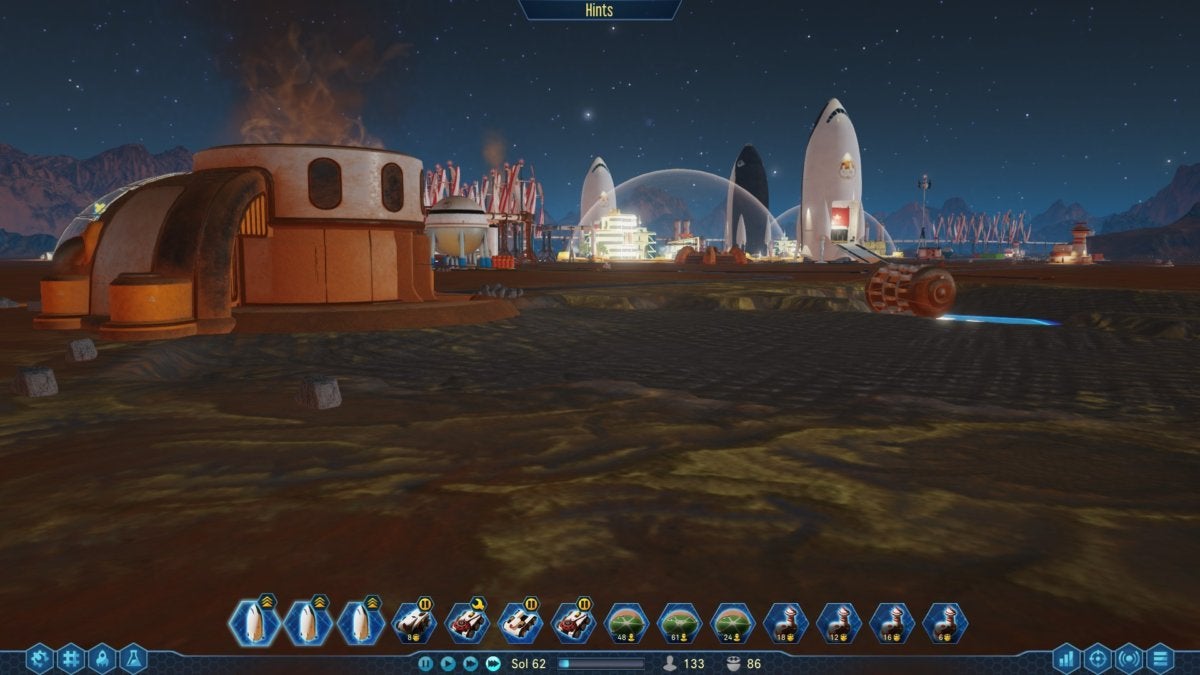 IDG / Hayden Dingman
IDG / Hayden Dingman Only I think I have a proper handle connected Surviving Mars at this point. My current colony is roaring. We're closing in on 500 colonists, many an of whom were whelped and raised on Martian soil. We've got food stockpiles to high for years, fivefold sources of metal and concrete to pull, plenty of factories to assemble the machine parts and electronics we used to import from Earth. It's looking for pretty good.
We in for did struggle to get here though. Living Mars is the latest metropolis builder-type gimpy from Haemimont, the developer behind the last few Tropicos. It's to a greater extent of a Colony builder than a metropolis detergent builder though, and every bit you've no doubt inferred, Surviving Mars trades the profane waters of the Caribbean for the ruby-red soils of our nearest planetary neighbor.
Turns out Mars doesn't really want us there, either—or leastways is indifferent to whether these animal tissue knoc creatures on its surface in play or die. Thus it falls to you to manage the construction of world's first celestial body Colony from scratch.
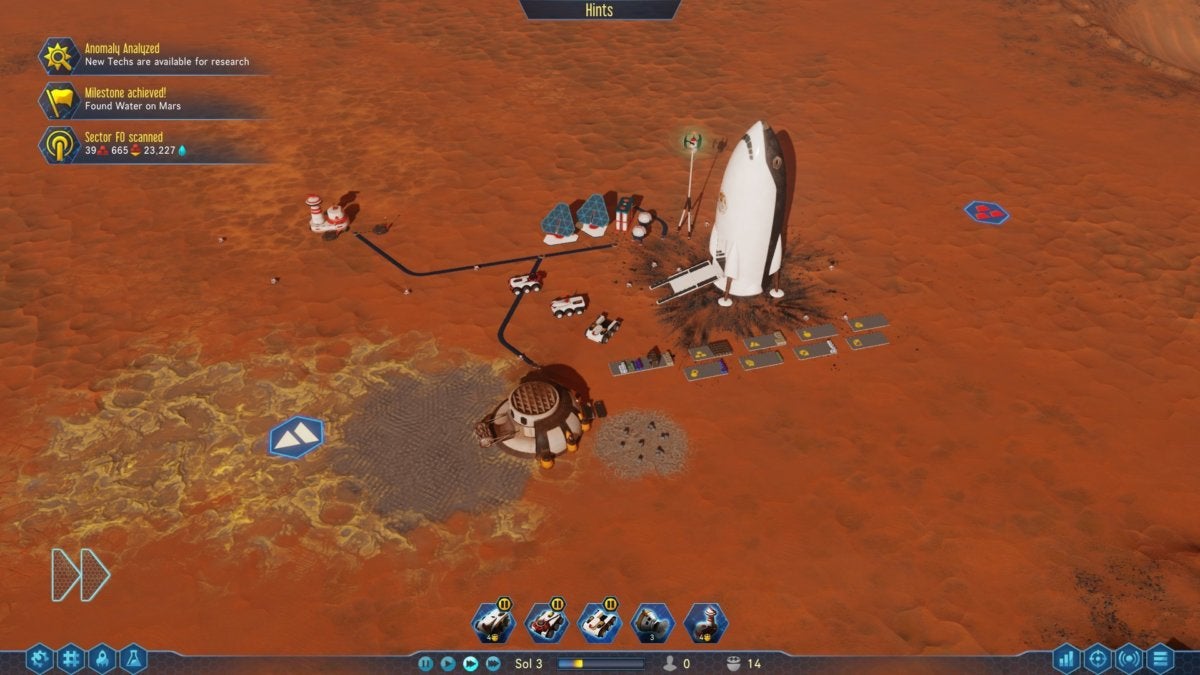 IDG / Hayden Dingman
IDG / Hayden Dingman You'll ground your original rocket, packed with drones and whatever supplies you could acquit—a act of factual, a bit of metal. You'll build a star panel, some cables, mayhap a tangible extractor. You'll start hunting for subwa water sources to exploit, or if you're unlucky you'll be forced to rely on condensation scant amounts of moisture from the ventilate.
It's rough. Precarious. Chances are you'll work for at to the lowest degree an hour or cardinal earlier humans ever step one single foot on Red Planet, and for in force reason—once they're on that point, they prat die. One misreckoning in your oxygen supply, or the amount of food you induce on hand, and the whole Colony could glucinium wiped down. It pays to get on slowly, to build irrigate tanks and batteries and oxygen tanks equally stockpiles, to get some enquiry under your belt.
Then you can finally build your first human settlement, a little oasis of greens grass in a vast red desert. You'll hire a rocket, lift up your first optimistic settlers, rejoice that you can last extract your personal metals instead of importing them from Solid ground. You'll sweep your fingers and hope they make it through the first x years. If you're favourable, the first Martian child mightiness even cost born.
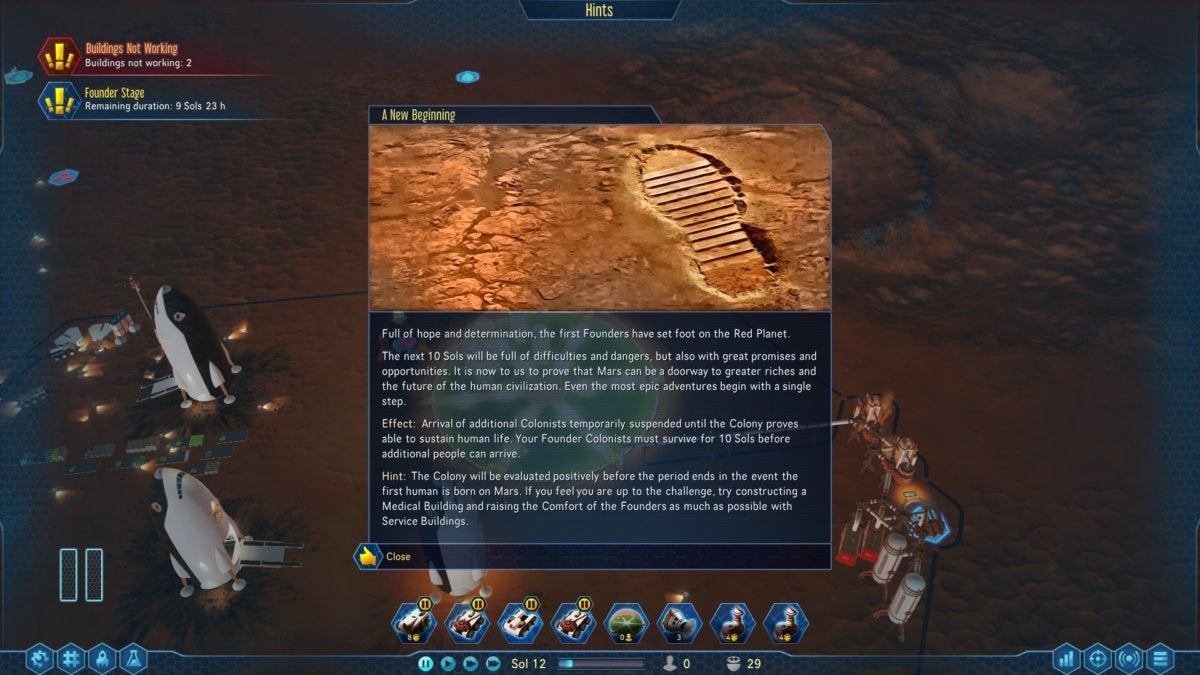 IDG / Hayden Dingman
IDG / Hayden Dingman Weirdly, it's this underlying optimism I find myself all but drawn to in Surviving Mars. I wouldn't exactly call Surviving Mars hard science, but it at least waterfall along that closing of the spectrum, and it wants you to approach it with a gravitas befitting the first Martian Colony. It expects you to struggle through the earliest years and, when things go poorly, IT expects you to die. It's a survival game at its core, and the setting is appropriate: Conquering Mars is a challenge.
But the implication is that we could suffice it. Human race could overcome its one-planet status, branch out into the solar system of rules. One Clarence Day humans might walk on Mars, might work and get down joined and grow crops on Mars. The technical school tree is cluttered with optimistic quotes from luminaries like Stephen Hawking, entirely speaking to humanity's potential. The Disk-jockey happening the in-game Bloody Frontier radio station talks about building baseball game diamonds on Red Planet, these small and mundane slices of Earth made miracles in their migration to an alien landscape.
Surviving Mars straddles a Wyrd line, I think. On one turn over, you have the hard-science approach to the simulation aspect, this constant tone of setting ascending dominoes. Maybe a wind turbine breaks and you lose power to your machine parts factory, which then makes it harder to exert the other turbines, a cascading failure that ends up threatening your unhurt colony. This element of danger sets it apart from nearly city builders, redress?
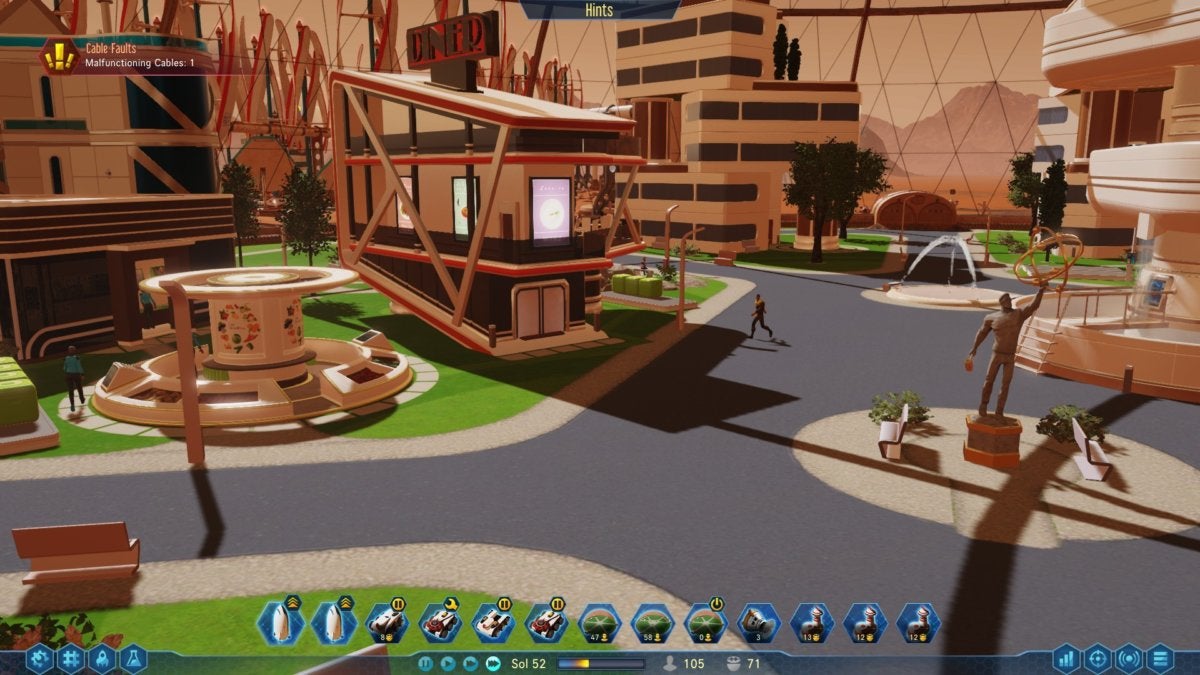 IDG / Hayden Dingman
IDG / Hayden Dingman The ocular flair seems to imply exactly the contrary, however. It's all soft curves, lush grass-full home domes, mid-century modern apartment buildings and condos. That sort of retro-futurism seems almost anachronistic in the context of this serious survival biz.
Futures are fanciful though. They'atomic number 75 constructed. And afterward a decade of dismal apocalypses and post-apocalypses, I get the feeling Haemimont wants you to come off feeling good around our chances. IT's the kinda optimism manhood had or so space trip in the 1960s and '70s, before NASA's financial backin was strip-mined, before we stopped looking past low-Earth domain. And it's a kind of optimism that seems resurgent in recent years, at least as it pertains to spaceflight.
That feeling of accomplishment is what draws me back to Surviving Mars, straight though the game desperately needs polishing. The interface in particular could use another lead or cardinal. Assure issues are the most minor, but I find myself stuck on them—for instance, the explore covert doesn't scroll unless you locomote the mouse to the right side of the screen, but if you're playing in borderless windowed mode your mouse will antitrust…restrain on going to your secondary admonisher. WASD South Korean won't work to pan it over, nor will the whorl wheel. Also, it doesn't highlight whatever research you last finished, and so I trust you remember. Shrimpy annoyances like that.
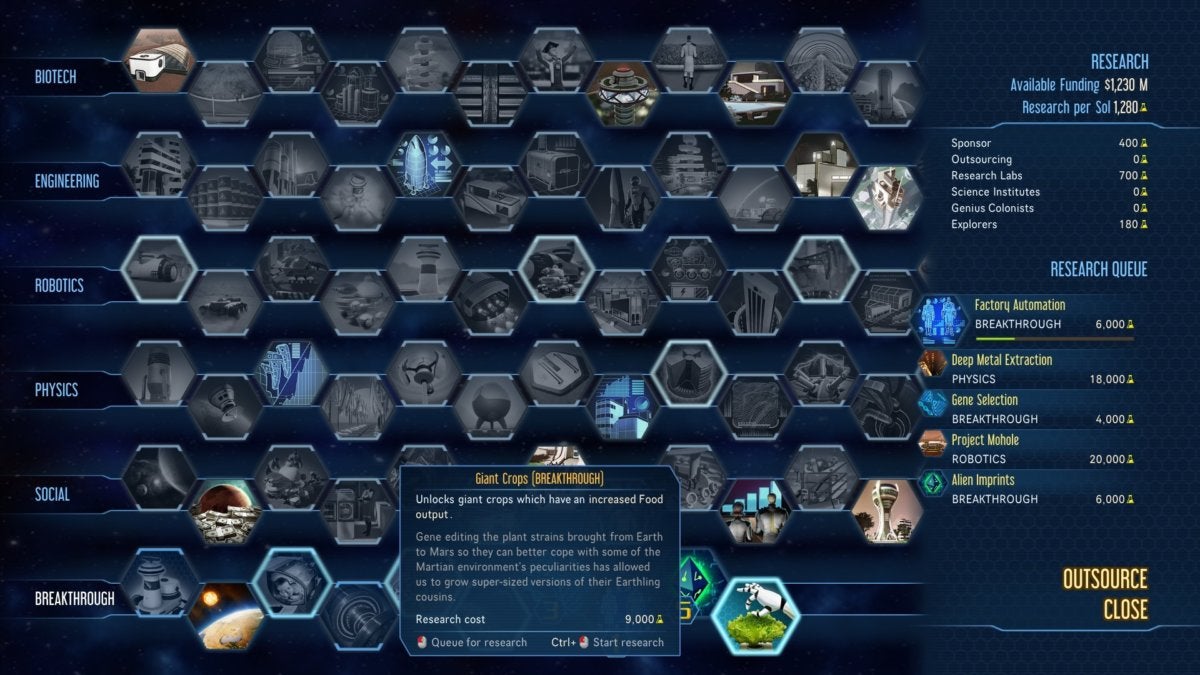 IDG / Hayden Dingman
IDG / Hayden Dingman Immodest information is also invisible 2 operating theater troika levels trench, and much elements aren't revealed until after you've already messed them up once. For instance, in order to pull metals you need to construct a mine for your colonists to exploit in. The catch: The mine has to be within a certain spoke of the habitation bean—and the game doesn't severalize you that until it's overly late. You'll witness out when you go to place your first mine and can't.
And the drone organisation is a massive trouble. Wish the Anno games, Surviving Mars is more about constructing logistics than ordering individuals some. At the heart of this are your drones, autonomous robots that stock supplies roughly your base. Drones are assigned to a certain drone hub though, and these hubs only encompass a small-scale radius. Thus to get supplies from one end of your cornerstone to the other often means construction storage areas wherever hubs lap and and so hoping the drones are impudent enough to move out the necessary items to and fro.
They'Ra not, though. They're really non. Acquiring the drones to work the room you want ass be utterly exacerbating, and I've often found myself seething when a dome is rapidly descending apart and the cause is that none of my drones persuasion to movement any metal or concrete into the expanse and so repairs could be done. Worsened, there's very little indication of what's actually going away reprehensible. You'll hear something like "Solid food Shortfall," check your boilers suit levels and realize 3,000 nutrient in depot, and have dead no idea why Drone A can't cooperate with Drone B to get food to Dome C. Colonists start out weird too. They'll choose jobs they're exclusively unqualified for, and so get ahead sad they're not qualified for the jobs they're working at, and til now calm down reject to move to a modern gig even if there are slots ajar.
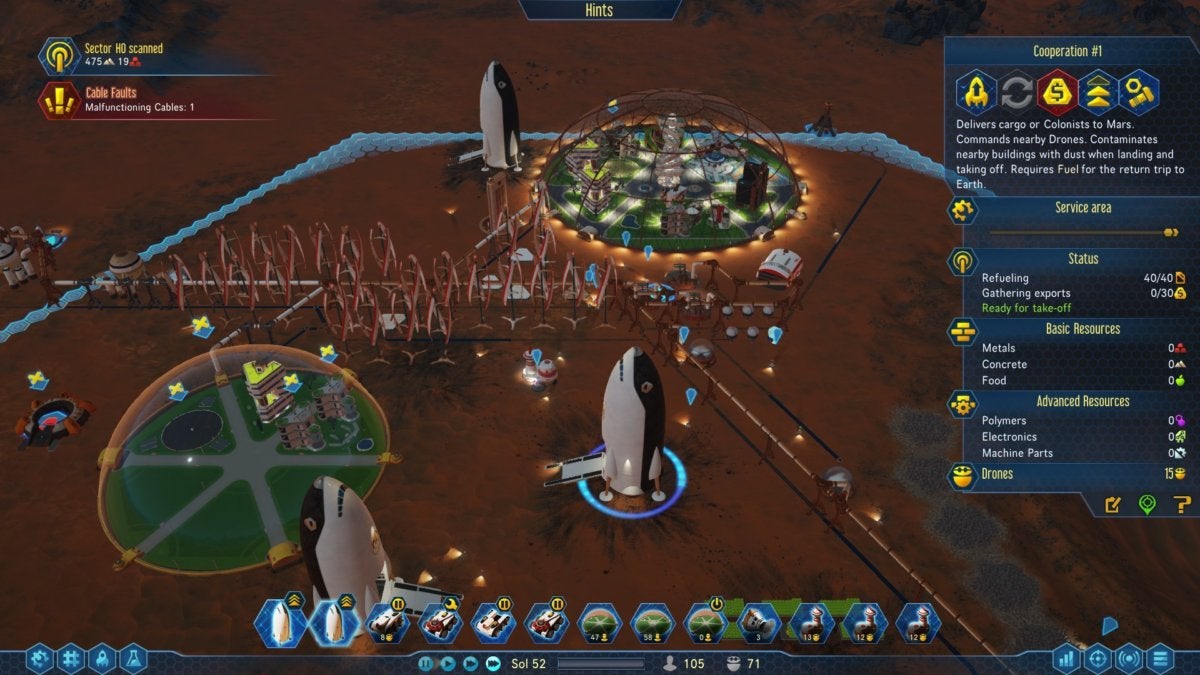 IDG / Hayden Dingman
IDG / Hayden Dingman It's conscionable bizarre, or even outright frustrating, and concerted with the threadbare instructor the trouble curve in this case is many of a difficulty wall. Oftentimes it feels like the difficulty is artificial, like you failed non because something was hard but because the spirited didn't tell you how not to fail in the first place. And while that's certainly a valid approach (especially when it involves a new frontier similar colonizing Red Planet) that variety of trial-and-error can get tiresome.
Bottom line
At long las I think Living Mars is worth bearing with, though. That's not the most rousing recommendation, I know, and for good reason. Lots of features feel half-finished, full of potential but either needing another balance pass Oregon another handful of buildings or even good a better menu so you could keep lead of what's going on. Changes need to be made.
Still, there's a solid foundation here. I think a lot of builder-typewrite games could learn from Surviving Mars—the tension of those early hours, the will-they-or-won't-they that tin can alone come from a scenario with actual bet, the sentience of accomplishment that comes from beating those betting odds. Mars or not, those are powerful emotions.
Source: https://www.pcworld.com/article/401704/surviving-mars-review.html
Posted by: fordquatere.blogspot.com


0 Response to "Surviving Mars review: Spreading humanity to the stars isn’t easy - fordquatere"
Post a Comment